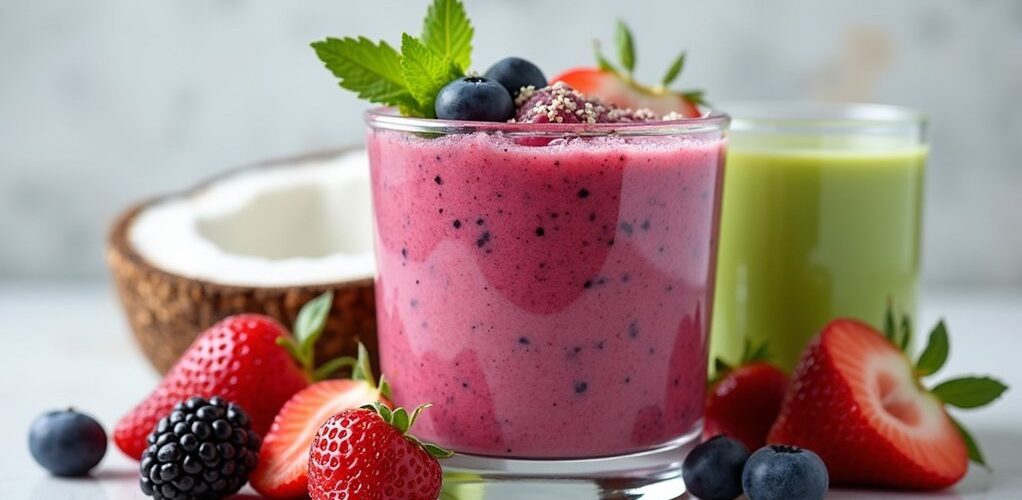
Creating tasty low-carb smoothies starts with selecting a sugar-free liquid base like unsweetened almond or coconut milk. Adding low-carb fruits such as berries, along with nutrient-rich leafy greens like spinach or kale, provides essential vitamins while maintaining minimal carbohydrates. Natural sweeteners including stevia or monk fruit can enhance flavor without increasing sugar content. Incorporating healthy fats from avocados or nut butters, plus protein sources like Greek yogurt, creates satisfying smoothies that support various dietary goals.
Key Takeaways
- Use unsweetened almond milk or coconut milk as a base, adding berries and leafy greens for minimal carb content.
- Add protein sources like Greek yogurt or protein powder to enhance satiety while keeping carbs low.
- Incorporate natural sweeteners like stevia or monk fruit instead of sugar, starting with small amounts and adjusting to taste.
- Create thicker smoothies by using frozen ingredients and ice cubes, blending in short bursts for optimal texture.
- Start blending with liquids at the bottom, followed by soft ingredients, then frozen items for the smoothest results.
Essential Low-Carb Smoothie Base Ingredients
While creating a delicious low-carb smoothie requires careful ingredient selection, starting with the right base components guarantees both nutritional value and taste satisfaction. Unsweetened almond milk serves as an ideal foundation, offering creaminess and minimal carbohydrates while complementing other ingredients perfectly.
For enhanced nutrition, incorporating leafy greens like spinach or kale adds essential nutrients without greatly impacting carb content.
To create a well-balanced smoothie, protein powder provides crucial amino acids and helps maintain satiety. The combination of these base ingredients can be enhanced with frozen berries for natural sweetness, healthy fats from avocado or nut butter, and seeds for added texture.
Each smoothie option is designed to contain less than 20g net carbs, making them suitable for maintaining ketosis and supporting health-conscious dietary goals while delivering great taste.
Choosing the Right Fruits for Low-Carb Blending
Selecting appropriate fruits for low-carb smoothie recipes requires careful attention to their sugar and carbohydrate content. Berries, particularly strawberries, blueberries, and blackberries, stand out as excellent choices due to their lower sugar content while still providing essential nutrients and natural sweetness. To enhance smoothie texture and nutritional value, incorporating avocados offers creaminess and healthy fats without greatly impacting carbohydrate levels. When preparing these beverages, using unsweetened coconut or almond milk as a base provides richness while keeping carbs minimal. For additional sweetness without increasing sugar content, frozen fruits can be used in controlled portions, while natural flavor extracts like vanilla or almond offer enhanced taste profiles. Keto-friendly sweeteners, such as stevia or erythritol, can be added to maintain low-carb goals while achieving the desired level of sweetness. This careful selection of ingredients guarantees delicious smoothies that align with low-carb dietary goals.
Best Leafy Greens to Include
When choosing leafy greens for low-carb smoothies, several nutrient-rich options stand out for their exceptional health benefits and minimal carbohydrate content.
Spinach and kale serve as excellent smoothie foundations, offering abundant vitamins, minerals, and antioxidants while keeping carbohydrates low.
Swiss chard, romaine lettuce, and collard greens provide additional variety, each contributing unique nutritional profiles that enhance smoothies without compromising low-carb goals.
Including leafy greens like arugula, which is rich in calcium, vitamins A and C, and low in net carbs, can further diversify your smoothie choices while supporting nutrient intake.
Nutrient-Rich Green Options
Incorporating leafy greens into low-carb smoothies provides an excellent opportunity to boost nutritional content while maintaining minimal carbohydrate levels. Spinach stands out as a nutrient-dense option with only 1 gram of net carbs per cup, delivering essential vitamins A, C, and K.
Similarly beneficial choices include kale and Swiss chard, each containing just 1 gram of net carbs per cup while offering antioxidants and minerals.
For those seeking variety, collard greens provide calcium and iron while keeping carbs low at 1 gram per cup. Arugula adds a distinctive peppery flavor with even fewer carbs, containing merely 0.4 grams per cup.
Each of these greens contributes unique nutritional benefits while helping maintain a low-carb profile in smoothie preparations.
Best Smoothie Base Choices
The foundation of any successful low-carb smoothie starts with the right leafy green base. Spinach stands out as a premier choice, offering exceptional nutrient density while keeping carbohydrates minimal. Its mild flavor adapts well to various ingredient combinations, making it an ideal starting point for beginners.
For those seeking diverse options, kale delivers robust nutrition with vitamins A, C, and K, while Swiss chard contributes essential minerals to the mix.
Romaine lettuce serves as a revitalizing alternative, providing fiber and a lighter taste profile that works well in fruit-forward blends.
Collard greens round out the selection with their hearty character and slight bitterness, perfect for those who prefer a more pronounced green flavor in their low-carb smoothies while maintaining superior nutritional benefits.
Healthy Fats and Protein Add-Ins
Creating a nutrient-rich low-carb smoothie depends heavily on the inclusion of healthy fats and protein-rich ingredients. Incorporating avocados delivers essential fatty acids while contributing to a creamy texture, making them an ideal foundation for low-carb smoothies.
Chia seeds serve as an excellent protein and fiber source, offering 5 grams of protein per ounce while supporting digestive health. For additional protein content, Greek yogurt, protein powder, or cottage cheese can be blended in to increase satiety and help maintain stable blood sugar levels. Nut butters, particularly almond and peanut varieties, provide both protein and healthy fats, with approximately 7 grams of protein and 16 grams of fat per 2-tablespoon serving, making them valuable additions to any low-carb smoothie recipe. Additionally, tempeh and edamame are great plant-based protein alternatives that can add both nutrients and flavor to your smoothies.
Natural Sweeteners That Won't Spike Blood Sugar
When selecting natural sweeteners for low-carb smoothies, monk fruit and stevia emerge as top choices, offering intense sweetness without impacting blood sugar levels or adding unnecessary carbohydrates. Understanding the proper ratios is essential, as these concentrated sweeteners can be 200-300 times sweeter than traditional sugar, requiring careful measurement to achieve the desired taste. Both monk fruit and stevia come in various forms, including liquid drops, powders, and blends with erythritol, making them versatile options for customizing smoothie sweetness while maintaining ketosis or managing blood sugar levels. It's important to use natural sweeteners like erythritol instead of artificial sweeteners, which may disrupt health and ketosis.
Best Sugar-Free Sweetener Options
Choosing natural sweeteners that won't spike blood sugar levels is essential for creating delicious low-carb smoothies while maintaining ketosis or managing diabetes. Several sugar-free options stand out for their healthy properties and versatility in smoothie recipes.
Stevia, derived from plant leaves, offers a calorie-free alternative that's ideal for low-carb diets, while monk fruit extract provides natural sweetness at 100-250 times the potency of sugar.
Erythritol and allulose present excellent choices with minimal caloric impact, contributing just 0.24 and 0.4 calories per gram respectively.
While xylitol can enhance smoothies with its tooth-friendly properties, it should be used moderately due to potential digestive sensitivity.
These alternatives enable smoothie enthusiasts to enjoy sweet flavors without compromising their health goals.
Monk Fruit Vs Stevia
Natural sweeteners have sparked considerable debate among health-conscious individuals, with monk fruit and stevia emerging as two prominent contenders for blood sugar-friendly alternatives.
Both options excel as sugar substitutes for those following a low-carb diet, offering zero calories and no impact on blood glucose levels.
Monk fruit sweetener, being 150-200 times sweeter than sugar, typically provides a cleaner taste profile compared to stevia, which can leave a distinctive aftertaste despite its similar sweetness level.
While both alternatives are natural and safe, stevia may cause digestive discomfort in some individuals when consumed in larger quantities.
When selecting between these sweeteners for smoothies, consider personal taste preferences and potential sensitivity to stevia, as both effectively deliver sweetness without compromising blood sugar control.
Measuring Natural Sweeteners Right
The precise measurement of blood sugar-friendly sweeteners stands as an essential factor in creating perfectly balanced low-carb smoothies. When incorporating natural sweeteners like stevia, monk fruit, or erythritol, careful measurement guarantees the best taste without compromising health benefits.
These alternatives provide sweetness while maintaining low-carb goals and blood sugar stability.
- Start with 1/8 teaspoon of stevia powder, as it's 50-300 times sweeter than sugar
- Use 1/4 teaspoon of monk fruit extract initially, adjusting for desired sweetness
- Measure erythritol in larger quantities, similar to sugar, due to comparable sweetness
- Allow smoothie to blend completely before adding more sweetener, as flavors develop during mixing
The key to successful measuring lies in starting conservatively and adjusting gradually, as these natural sweeteners vary greatly in potency and can dramatically affect the final taste.
Liquid Options for the Perfect Consistency
Essential liquid ingredients serve as the foundation for achieving the perfect low-carb smoothie consistency. Unsweetened almond milk and coconut milk provide creamy textures while keeping carbohydrates minimal, making them ideal choices for health-conscious smoothie enthusiasts.
Adding ice cubes not only creates thickness but also delivers a revitalizing, frosty experience without additional carbs.
For those seeking variety, water or sparkling water offers a lighter alternative that maintains hydration while keeping sugar content low. Unsweetened soy milk and cashew milk present additional options, each bringing unique flavors and nutritional benefits to smoothie creations.
When selecting liquid bases, it's vital to avoid fruit juices, which can dramatically increase carbohydrate content and compromise low-carb goals.
For a rich and creamy texture, consider incorporating whipping cream, which contains less than 4g carbs per cup, ideal for those on a keto diet.
Top Kitchen Tools for Smoothie Making
A high-powered blender forms the cornerstone of smoothie preparation, working alongside essential measuring tools to guarantee precise portions for maintaining low-carb goals.
Smart storage solutions, including reusable smoothie cups and transport bottles, extend the convenience factor while keeping drinks fresh and accessible throughout busy days.
The combination of basic equipment, accurate measuring implements, and practical storage options creates an efficient smoothie-making station that supports a consistent low-carb lifestyle.
Essential Blending Equipment Basics
Making perfect low-carb smoothies requires several key pieces of equipment that can transform raw ingredients into silky, nutrient-rich beverages. A high-powered blender serves as the foundation for creating consistently smooth results, especially when processing tough ingredients like frozen fruits and fibrous greens.
Essential equipment for ideal smoothie preparation includes:
- A blender pitcher with clear measurement markings for precise portioning
- A tamper tool to help incorporate thick mixtures effectively
- A fine-mesh strainer or nut milk bag for achieving ultra-smooth textures
- A portable blender option for smoothie enjoyment away from home
These tools work together to guarantee proper ingredient incorporation, texture control, and convenience.
The right equipment can greatly impact the final product's quality, making the difference between a grainy mixture and a perfectly blended smoothie.
Smart Storage Solutions
Several smart storage solutions can transform a standard kitchen into an efficient smoothie-making station, streamlining the preparation process while preserving ingredient freshness.
Freezer-safe bags and containers are essential for creating pre-portioned smoothie packs, which pair perfectly with a high-powered blender for quick preparation.
Silicone ice cube trays offer versatility for freezing measured portions of plant-based milk alternatives, while vacuum sealers help extend ingredient shelf life by preventing freezer burn.
For maximum convenience, portable blending cups with built-in blades enable fresh smoothie preparation anywhere.
These storage tools work together to create an organized system that saves time, reduces waste, and maintains the nutritional integrity of ingredients, ensuring consistent results when creating low-carb smoothies.
Measuring Tools Matter Most
Precise measurement stands at the core of successful low-carb smoothie creation, requiring specific tools to maintain consistency and achieve ideal results.
A well-equipped kitchen should include measuring cups and spoons for accurate ingredient portioning, alongside a reliable kitchen scale for precise weight measurements of protein powders and nuts. Clear marked containers streamline preparation and guarantee consistent results across multiple batches.
Essential measuring tools for low-carb smoothies include:
- High-powered blender with tamper tool for thorough ingredient incorporation
- Complete set of measuring cups and spoons for both wet and dry ingredients
- Digital kitchen scale for precise weight measurements
- Clear, marked containers for efficient ingredient prep and storage
These tools work together to create perfectly balanced smoothies while maintaining portion control and nutritional targets.
Time-Saving Prep and Storage Methods
Streamlining the preparation of low-carb smoothies can transform a time-consuming process into an efficient daily routine. Creating pre-made smoothie freezer packs with portioned fruits, vegetables, and seeds allows for quick assembly when combined with yogurt or protein powder, while storing them for up to three months maximizes convenience. A high-powered blender guarantees ideal consistency, particularly when incorporating fibrous greens and frozen ingredients like avocado. To maintain freshness, store prepared smoothies in airtight containers in the refrigerator for up to 24 hours, or freeze individual portions for extended storage. Advance preparation, including chopping fruits and measuring powders, greatly reduces morning prep time. Selecting ingredients that freeze well, such as bananas and avocados, enables bulk preparation while maintaining the desired creamy texture and low-carb profile. To ensure the smoothie aligns with a keto-friendly diet, focus on low-carb fruits like berries and nutrient-rich vegetables like spinach.
Balancing Flavors Without Adding Carbs
Creating flavorful low-carb smoothies requires thoughtful ingredient selection and careful balancing of taste elements. By incorporating natural sweeteners and flavor enhancers, smoothie enthusiasts can craft delicious beverages without excess carbohydrates. Almond milk serves as an excellent low-carb base, while natural flavor boosters help create satisfying combinations.
- Combine unsweetened almond milk with low-carb green vegetables and blend until smooth for a nutritious foundation.
- Layer flavors using sugar-free additions like vanilla extract, cinnamon, or cocoa powder.
- Add healthy fats such as avocado or nut butter to create richness and depth.
- Include small portions of berries for natural sweetness while maintaining low carb counts.
When making smoothies, consider using keto-friendly oils like coconut oil, which offers antibacterial properties and supports energy production through rapid conversion to ketones.
These techniques allow for creative flavor combinations while adhering to low-carb dietary requirements, ensuring smoothies remain both nutritious and satisfying without compromising taste.
Common Mistakes to Avoid When Blending
Many smoothie makers sabotage their low-carb creations by adding ingredients in the wrong order, failing to start with liquids that create essential blending vortexes. Proper maintenance of blender blades, including regular cleaning and occasional sharpening, guarantees consistent results and prevents unwanted chunks in the final product. Regular inspection of gaskets and seals, combined with proper assembly after cleaning, helps prevent leaks and maintains the blender's peak performance for creating smooth, well-mixed beverages. For those following a keto diet, efficient cooking methods like batch cooking and proper ingredient organization can significantly enhance meal prep and maintain consistency.
Wrong Ingredient Order
While blending the perfect low-carb smoothie requires the right ingredients, the order in which they're added to the blender plays an equally crucial role in achieving the desired consistency.
Starting with liquids first creates a vortex that helps prevent ingredients from sticking to the blades, while adding soft ingredients second guarantees smooth incorporation. Frozen fruits should follow, and powders or seeds should be added last to prevent clumping.
Common layering mistakes to avoid include:
- Adding frozen ingredients first, which can jam the blades
- Placing powders at the bottom, leading to clumping and poor distribution
- Starting with thick ingredients that prevent proper blade movement
- Overfilling the blender, which compromises the final texture and strains the motor
Improper Blender Maintenance
Proper blender maintenance stands as a cornerstone of consistently achieving high-quality, low-carb smoothies. To guarantee peak blending results, users should regularly inspect their blender's components, particularly the blade assembly, for signs of wear or damage that could compromise smoothie quality and safety.
Regular cleaning between uses prevents flavor contamination and maintains the intended taste profile of each smoothie. This includes thorough washing of the blender jar, careful attention to the blade assembly, and periodic deep cleaning cycles using warm, soapy water.
Additionally, maintaining proper seals and gaskets prevents leakage and guarantees efficient blending performance. Users should also respect the blender's capacity limits, as overfilling can lead to uneven blending and potential spillage, ultimately affecting the consistency of their low-carb creations.
Seasonal Low-Carb Smoothie Combinations
Creating delicious low-carb smoothies throughout the year becomes easier by incorporating seasonal ingredients that naturally complement each other. Fresh greens provide a nutritious base year-round, while seasonal fruits can be strategically added to maintain low carbohydrate content while maximizing flavor.
Fresh, seasonal produce is the secret to creating flavorful low-carb smoothies that stay within your nutritional goals all year long.
- Spring/Summer: Combine strawberries and raspberries with spinach for a vibrant, invigorating blend.
- Fall: Mix pumpkin puree with warming spices and kale for an autumn-inspired drink.
- Winter: Incorporate citrus zest and frozen berries for immune-boosting properties.
- Year-round: Add frozen fruits and leafy greens to create texture and enhance nutritional value.
Understanding seasonal availability helps crafters of low-carb smoothies maintain variety while keeping carbohydrate content in check. This approach guarantees both nutritional goals and taste preferences are met throughout the changing seasons.
Nutritional Boosters and Supplements
Low-carb smoothies can be transformed into nutritional powerhouses through the strategic addition of boosters and supplements that enhance their health benefits without greatly impacting carbohydrate content. Incorporating nutritional boosters such as protein powders, seeds, and greens can considerably increase the smoothie's nutritional value while maintaining its low-carb profile. Protein synthesis plays a crucial role in maintaining muscle and supports overall health, making protein powders a valuable addition to your smoothie regimen.
| Booster Type | Benefits | Serving Size |
|---|---|---|
| Protein Powder | 20-30g protein | 1 scoop |
| Seeds (Chia/Flax) | Dietary fiber, omega-3s | 1 tablespoon |
| Nut Butters | Protein and fat | 2 tablespoons |
The combination of protein and fat from sources like whey powder and almond butter, along with dietary fiber from chia seeds, creates a balanced smoothie that supports satiety and overall nutrition while keeping carbohydrates in check.
Measuring and Portion Control Tips
Successful preparation of smoothies hinges on accurate measurement and portion control to maintain their low-carb status while delivering ideal nutrition. Digital kitchen scales provide precise measurements for ingredients, while measuring cups offer reliable portioning for bulkier items.
For consistent smoothie preparation and accurate portion sizes, consider implementing these essential practices:
- Use designated measuring cups for ingredients like leafy greens and frozen fruits to prevent overloading.
- Follow serving size guidelines on packaging when adding powdered supplements or seeds.
- Pre-portion ingredients into storage containers or freezer bags for streamlined preparation.
- Utilize measuring spoons for precise control of liquid ingredients and concentrated items.
This systematic approach to measurement guarantees that smoothies maintain their intended nutritional profile while delivering consistent results with each blend.
Troubleshooting Texture and Taste Issues
When smoothies don't achieve the perfect texture or taste, several common issues can be readily addressed through systematic adjustments to ingredients and preparation methods. A high-powered blender is essential for creating the ideal consistency, particularly when smoothie recipe uses fibrous ingredients. For a creamy smoothie texture, incorporating ingredients like avocado or Greek yogurt proves effective.
| Issue | Solution | Result |
|---|---|---|
| Too Thick | Add liquid gradually | Best consistency |
| Too Bland | Include natural extracts | Enhanced flavor |
| Not Smooth | Use powerful blender | Silky texture |
Fine-tuning taste can be accomplished by adding low-carb sweeteners or small amounts of berries, while texture improvements often involve adjusting the liquid-to-solid ratio. Natural flavor enhancers like vanilla extract or cinnamon can enhance taste without increasing carbohydrate content.
Frequently Asked Questions
How Do You Make Smoothies Blend Better?
Smoothie blending techniques involve layering ingredients from soft to hard, maintaining ideal ingredient ratios, starting with liquid bases, and using high-powered blenders. These steps enhance texture varieties for smoother results.
What Can I Add to My Smoothie to Make It Taste Better?
Strategic fruit combinations, natural flavor enhancers like vanilla extract, and sweetener options including stevia enhance smoothie taste. Adding protein powder and unsweetened nut milk creates richer, more satisfying flavors.
What Is the Best Low-Carb Liquid for Smoothies?
Unsweetened almond milk ranks as the top low-carb smoothie base with just 1g carbs per cup. Coconut milk and unsweetened yogurt are excellent alternatives, offering rich texture while maintaining minimal carbohydrates.
What Can I Add to My Smoothie for Carbs?
Common carb sources for smoothies include bananas, mango, dates, oats, honey, and maple syrup. These ingredient combinations offer natural sweetness, while fruit alternatives like pineapple provide energy-rich carbohydrates.
Conclusion
Creating delicious low-carb smoothies requires thoughtful ingredient selection and proper technique. By focusing on nutrient-dense base ingredients, carefully portioned fruits, and healthy fats, anyone can blend satisfying drinks that support their dietary goals. With the right combination of greens, proteins, and natural sweeteners, these smoothies can become a sustainable part of a low-carb lifestyle. Remember to measure ingredients carefully and adjust flavors gradually to achieve the perfect balance.



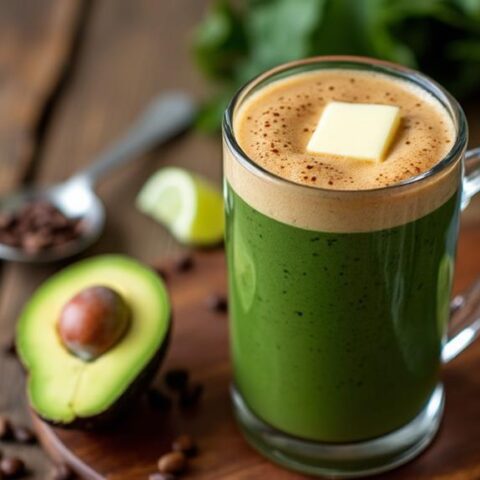
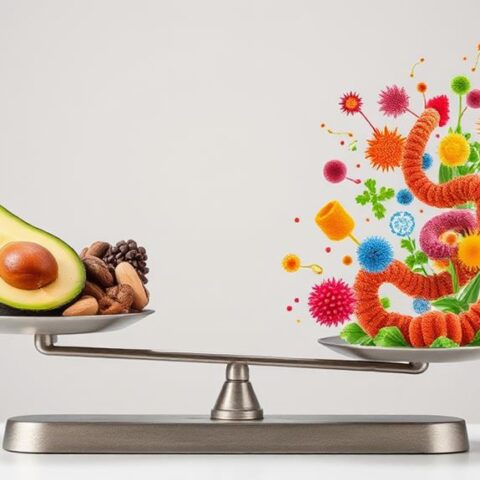
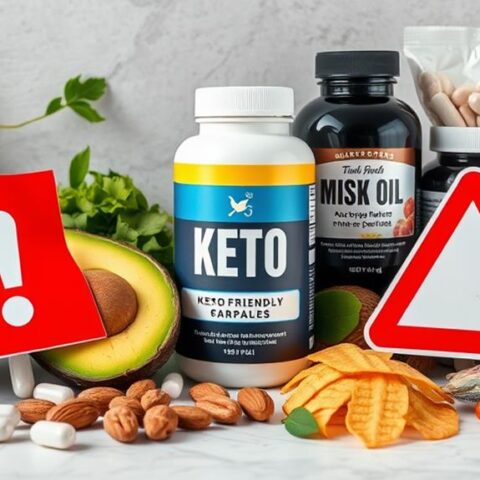
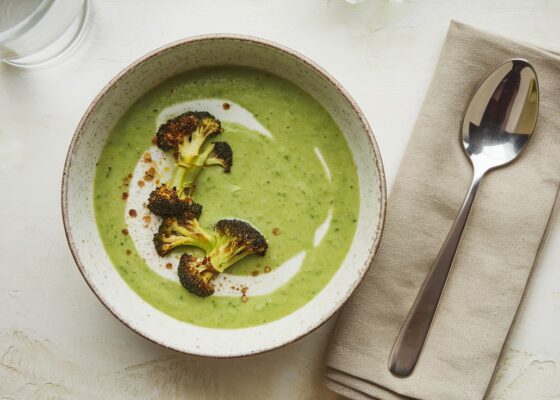

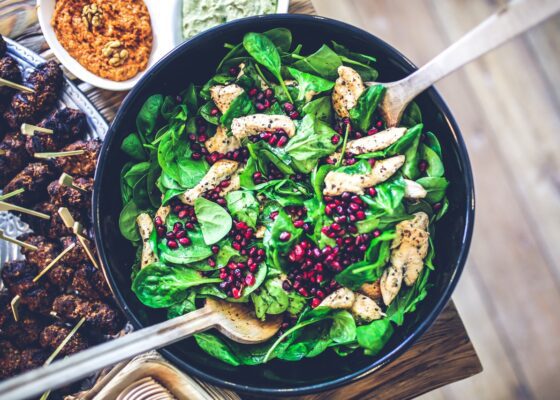

No Comments